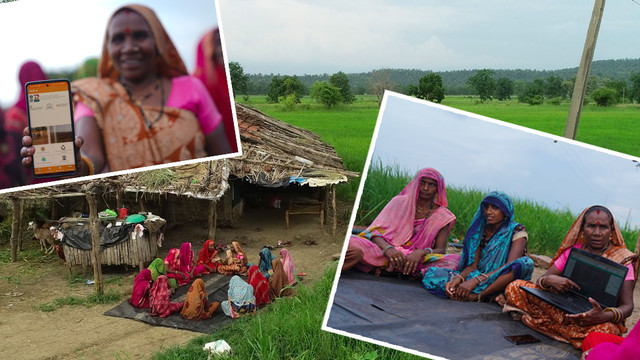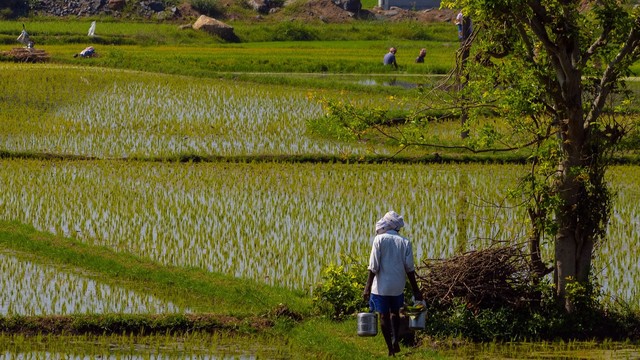Addressing the political and technical challenges of measuring adaptation
Susannah Fisher outlines the challenges that need to be addressed in order to effectively measure progress on adaptation as part of the first global stocktake in 2023.


Kenyan ministry officials, agricultural researchers and farmers are testing a range of climate adaptation measures in lower Nyando district (Photo: V. Atakos/CCAFS, Creative Commons via Flickr)
The Paris Agreement is widely recognised as an exciting step forward in the world’s fight against climate change. One element that sets it apart is its global goal for adaptation – the first time such a goal has been agreed.
The international climate regime will measure collective progress of adaptation through a global stocktake in 2023. This assessment should help signatories improve their national plans and activities. It is also an opportunity to share learning as well as improve accountability through reviewing the adequacy, effectiveness and support for adaptation.
This process is ambitious and worthwhile, but there are several potential political and technical challenges that need to be addressed to ensure it is effective.
What are the challenges to meaningful measurement of the goal?
As we discuss in an article for Climate Policy, there are four key challenges. The first is designing a system that can aggregate results. Adaptation is a local, context-specific process that makes it difficult to compare and compile indicators and data from significantly different local and national contexts. But it is only by doing this that an accurate global assessment can be made.
The second is how to manage two of the aims of the stocktake – learning to improve national action and a review of collective progress to assist accountability. We argue these two aims have different incentives. It is crucial that in designing the stocktake, governments think through how to combine them in a way that gives each equal importance.
The third is the methodological challenges in adaptation. There are many uncertainties around how the future impacts of climate change will affect people’s livelihoods and socio-ecological systems. Evaluation methods often assume a constant baseline and measure the progress of an intervention or policy against that baseline.
However, the frequency and severity of hazards are changing. This alters the underlying context in which adaptation efforts are being tried and could affect the results being measured.
Finally there are the political challenges around measurement within the international climate regime. Reporting on climate action has a long-politicised history within the negotiations and elements of the stocktake have the potential to be highly controversial. While some scholars have suggested technical approaches to tracking adaptation, proposals must deal explicitly with the political feasibility of any measurement.
So, how can it be done?
To overcome these obstacles, we propose that the elements of the adaptation goal are broken down into defined areas of relevant activity that countries opt into and report on. All countries choosing a particular area of adaptation would need to report on a small number of core indicators, so progress could be aggregated, and then choose others that are optional as a way of providing additional detail.
For example, a number of countries might choose to report on climate-resilient agriculture as an important area of their adaptation activity. They would then all report on core indicators, such as having a climate-resilient agricultural policy and choose optional indicators relevant to their context, such as coverage of drought-resistant crop varieties.
Within these areas there need to be indicators that capture the environment necessary for adaptation to happen. This would include having appropriate policies in place and sufficient capacity and resources to use climate information and plan for the future.
There also need to be clear criteria of what results would show whether an adaptation policy was ‘successful’, such as increased crop yields or less damage incurred from storm surges, to help measure what is actually being achieved.
Some national and international data are available, which countries can compile to report on these dimensions. This existing information, rather than asking for expert data collection or new formats for each country, should be the basis of understanding national progress towards achieving successful adaptation measures. Putting the emphasis on reporting through national data would also encourage governments to build up and strengthen their national evaluative systems, which in turn will enable national learning about adaptation.
Given the current gaps in the data and the methodological challenges, this will probably not be sufficient to leverage the potential of learning about cross-cutting and thorny issues from the global experience of adaptation.
Therefore, in the short term, a body such as the IPCC could be invited to give complementary expert analysis on specific topics, which could strengthen the evidence base and learning.



